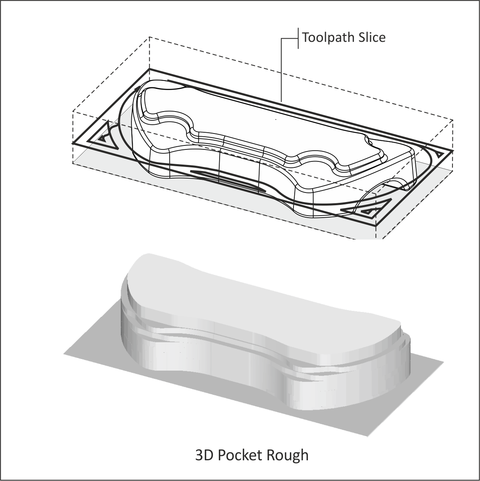 |
|
Figure 9.5: 3D Pocket Rough |
3D tool paths can be grouped into two broad classifications: Roughing and Finishing. The aim of roughing tool paths is to remove excess material and, ideally, leave a constant thickness of stock all over the part for the finishing operations.
CAM systems include many strategies for roughing but by far the most common is some variation of 3D pocketing. These tool paths work by slicing the part by planes normal to the Z-axis. A boundary is created at each level, offset by the stock allowance, and 2D pocket tool path generated from this boundary. The result is a tiered cake shape as shown by the shaded image in Figure 9.5.
 |
|
Figure 9.5: 3D Pocket Rough |